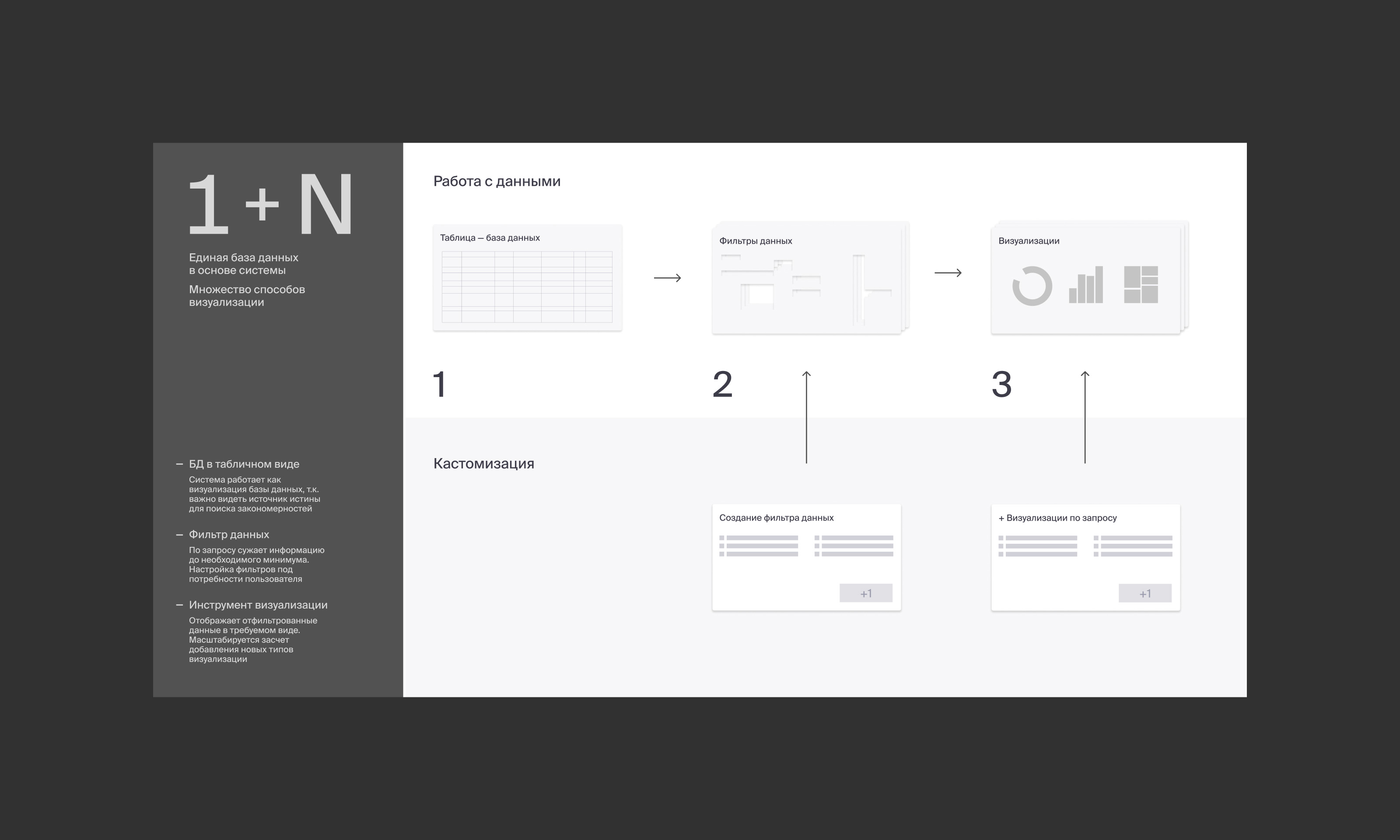
From the very beginning, I built my work in Figma on a component base.
Design — is a process of learning, ordering, and reducing entropy. In design, we manage the unknown, discover and structure it.
manageunknow

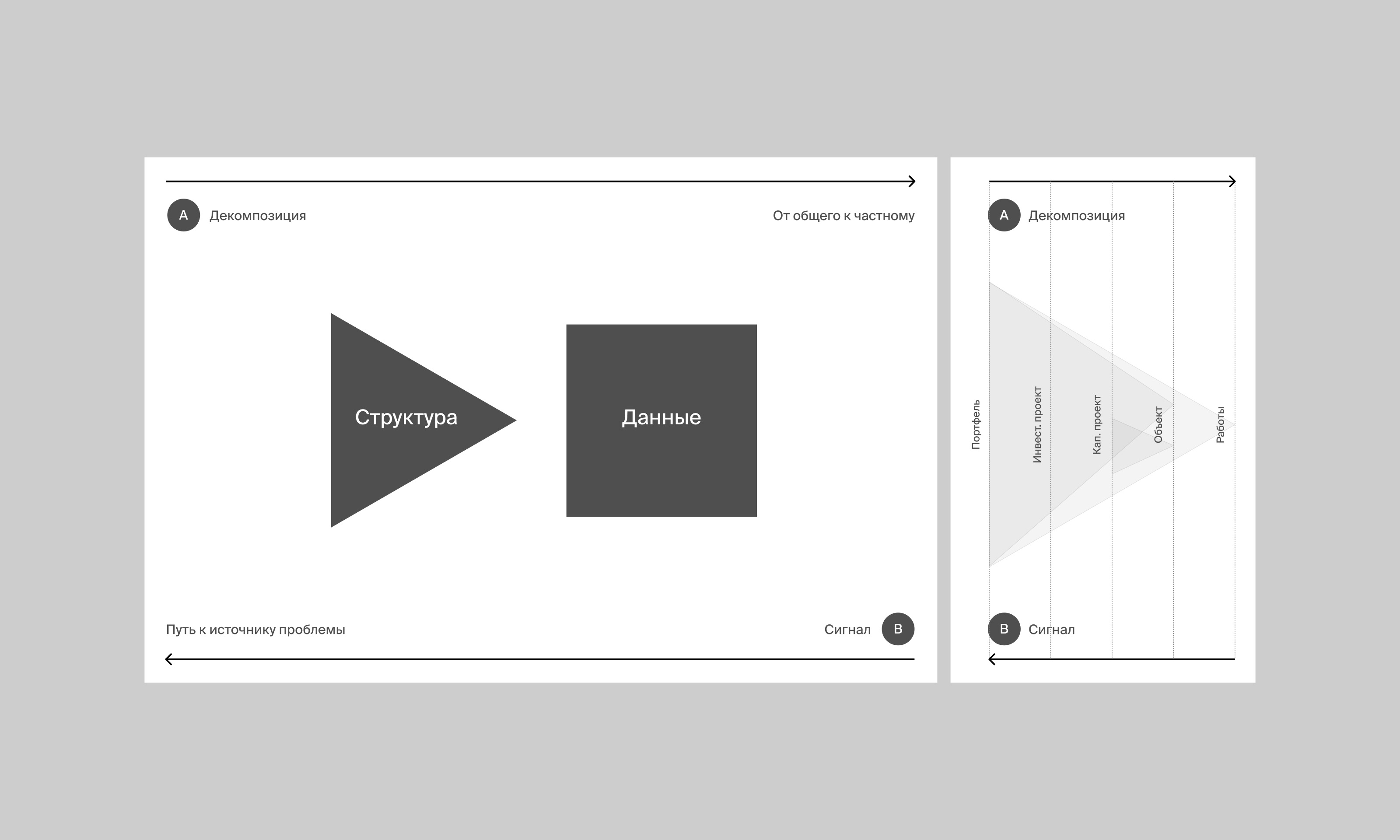
"From the general to the particular" — conceptual model of the project. Sets the rules for the interface. The entire data flow is grouped at five levels, navigation along which is strictly linear. This reduces the cognitive load on the user, and only the necessary data is always in front of the eyes.
Using signal navigation, the user has the opportunity to go from the top level down to the source of the problem that affects the process as a whole.
The first level of navigation is — project offices. Various data visualization widgets.
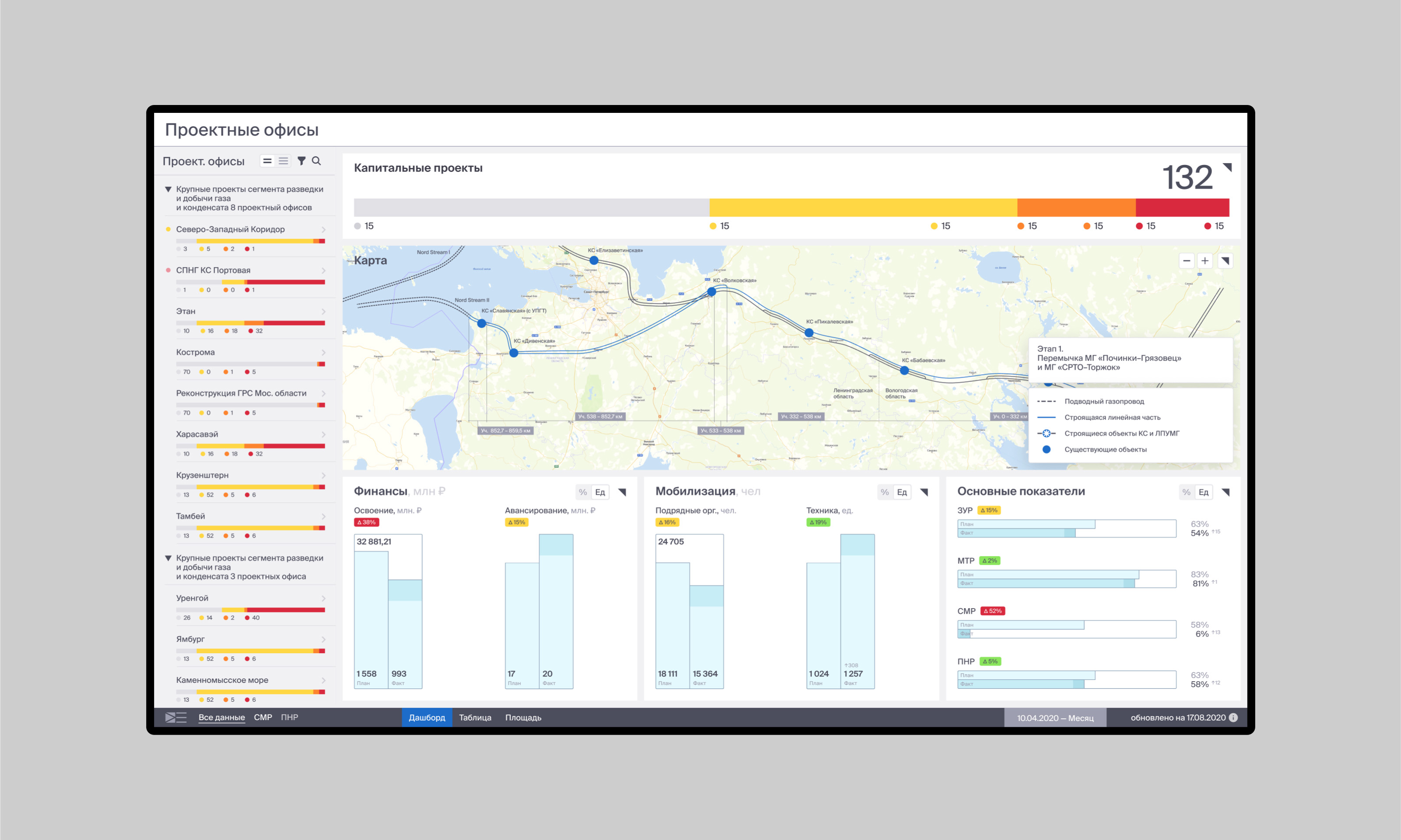
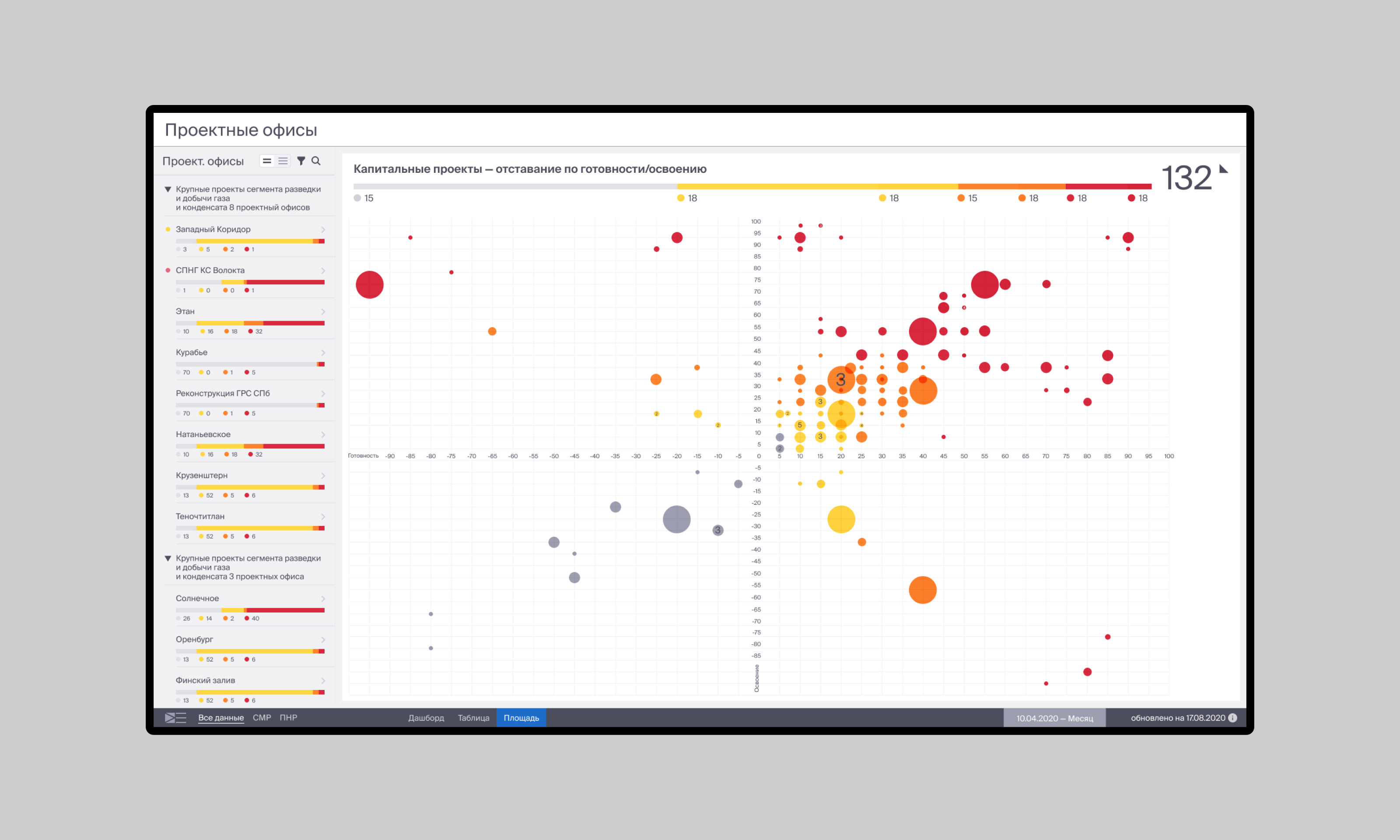
The second level of navigation — investment project. Contains more detailed data. Visualization as a dashboard or list.
The third navigation level — capital project. Detailed information about the object. After this level, the data breakdown is already by contractors, specific widgets are responsible for it.

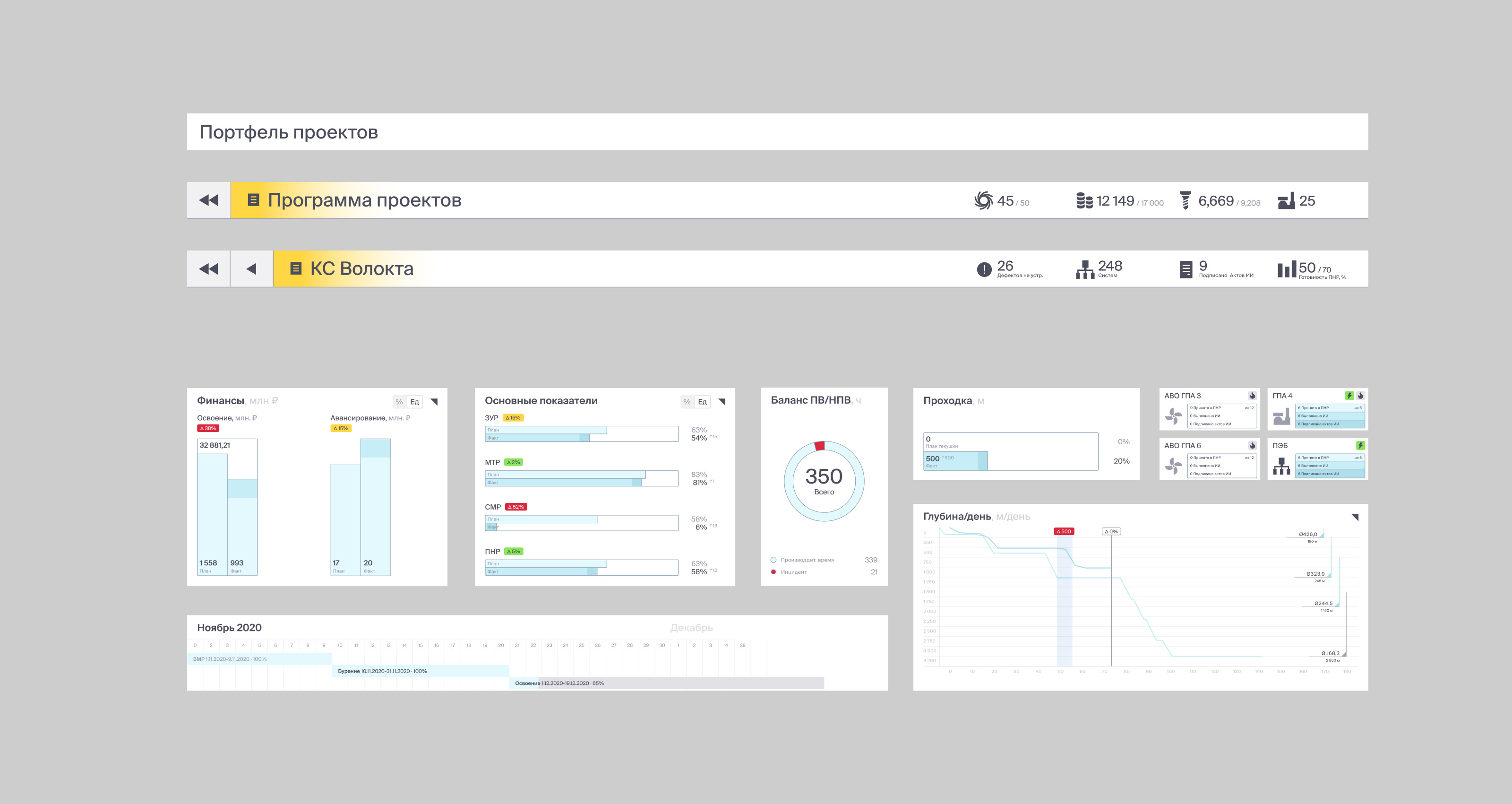
Selected set of — components: top statusbar and widgets.
Report assembly panels. The version was not put into production and remained at the concept stage, approved by the customer.
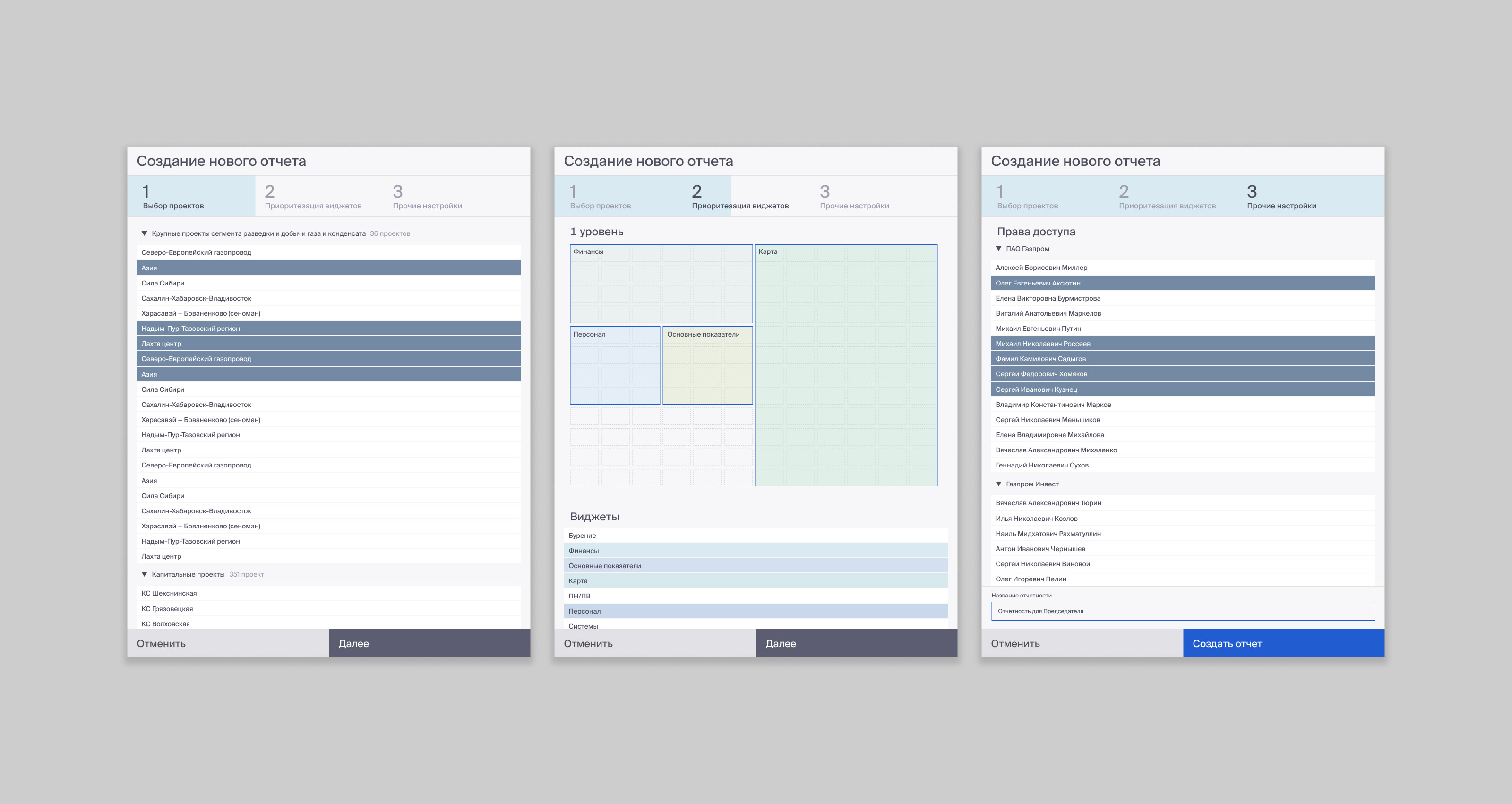
Based on the reporting, a concept of a single database — manager dashboard was designed in a sketch. It consists of widgets displaying the most important information on selected filters. User — senior manager.
Widgets are customizable, and the interface was designed for large touch panels in the corporation's offices.
The project remained at the level of the concept agreed upon by the customer.
